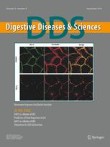
Abstract
Eosinophilic esophagitis (EoE) is characterized by eosinophilic infiltration of the esophageal mucosa and symptoms of esophageal dysfunction, including dysphagia. While EoE is still considered a rare disease, in practice it seems that more and more cases are diagnosed every week, research in the field is exploding, and the pipeline for treatments contains multiple agents, some of which are quite far along the development pathway. After only scattered cases and small series were published in the late 1970s and 1980, Stephen Attwood, Thomas Smyrk, Tom DeMeester, and James Jones, published in Digestive Diseases and Sciences in 1993 a seminal report that described a clinicopathologic syndrome of esophageal eosinophilia with dysphagia. This review details the origins of this paper and compares and contrast what was observed then and what is known now about multiple aspects of EoE, including the clinical presentation, diagnosis, epidemiology, natural history, and treat ments and outcomes. Moreover, it will highlight how the paper presaged a number of controversies in the field that have yet to be resolved, as well as foreshadowed the collaborative, multidisciplinary approach that has led to rapid advances.



Δεν υπάρχουν σχόλια:
Δημοσίευση σχολίου
Σημείωση: Μόνο ένα μέλος αυτού του ιστολογίου μπορεί να αναρτήσει σχόλιο.